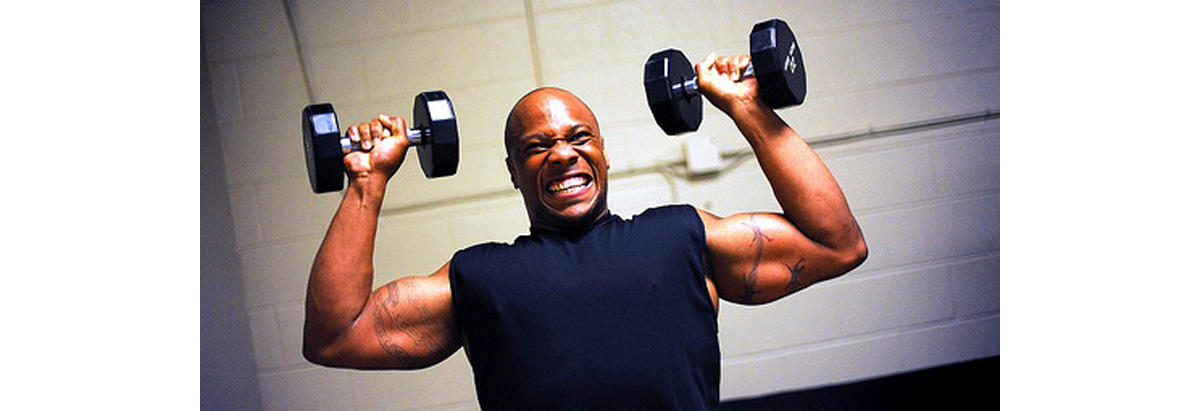Table of Contents
You spend an hour a day on the elliptical trainer but you don't lose a pound. You wear out two pairs of running shoes without needing to buy smaller sweat pants. You swim 50 laps but never achieve a swimmer's physique. What are you doing wrong?
At a cellular level, your body does not really care what kind of weight your muscles are resisting. Maximal exertion of any kind accomplishes the changes that prime your body to burn fat while lowering insulin levels so your body does not store fat—assuming you avoid overeating.


Here are some ways you can get the benefits of strength training without necessary doing "strength training:"
- If you are lifting a weight, be sure to isolate the muscle you are training. Do not, for example, use your back muscles to help you perform an arm exercise. Form is more important than speed or weight. Doing exercises in good form reduces the risk of injury, and increases the benefits to individual muscles.
- Do weight lifting exercises slowly. Lift slowly over 5 to 10 seconds, and then lower the weight over about 15 seconds, so the entire exercise takes 25 seconds—or as long as you can stand.
- Exercise different muscle groups. If you are using an elliptical trainer, a bicycle, a stationary bicycle, and a ski machine all the same day, you are exercising the same muscle groups. Try to exercise as many different muscle groups as you can.
- Setting a treadmill, elliptical trainer, or stair master for maximum vertical grade emulates weight training for leg and hip muscles.
- If you are bored with working out with weights, or if you are concerned to use free weights (dumbbells) for safety reasons, do chin-ups, sit-ups, or push-ups. Or just do aerobic exercise at maximum intensity. Performing aerobic exercise as hard as you can accomplishes the same changes at the cellular level that weight lifting does—but easy aerobic exercise won't accomplish the changes your body needs.
Don't do all-out exercise of any muscle group, or your whole body, every day. Your muscles need about 48 hours if you are under the age of 60, or maybe as long as 72 hours if you 60 are over, to recover and rebuild themselves. If you do too much exercise of the same muscle groups without giving them recovery time, they won't have a chance to rebuild and reshape themselves to become larger, firmer, and stronger.
A few things that won't happen as a result of exercise
- Women do not grow ugly, large muscles as a result of working out. Bulk is not just the result of working out. It is also the result of muscles getting covered by fat. If you don't follow a fat-gaining diet outside the gym, you are not going to grow unattractive, large muscles.
- Weight training does not limit athletic ability or cause injury. It's possible to overexercise a particular muscle—the abs are the most commonly overexercised muscle—so that pressures on the spine are unbalanced and lower back pain and lower back injury are more likely. But if you exercise all your muscles in rotation on a regular basis, this will not happen.
- Muscles do not turn into fat as a result of disuse. Muscles do contain their own energy stores in the form of glycogen. This is a combination of glucose and water that gives the muscle bulk. If you don't exercise, however, the glycogen does not turn into fat. It just is not replenished as quickly as if the muscle were worked hard so it became sensitive to insulin.
- Richard K. Bernstein, MD. Dr. Bernstein's Diabetes Solution (2007 edition, pp. 223-227).
- Photo courtesy of brett jordan by Flickr : www.flickr.com/photos/x1brett/6058633012/

